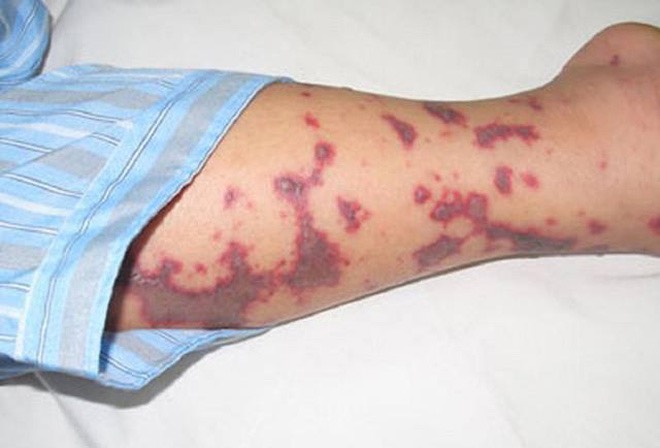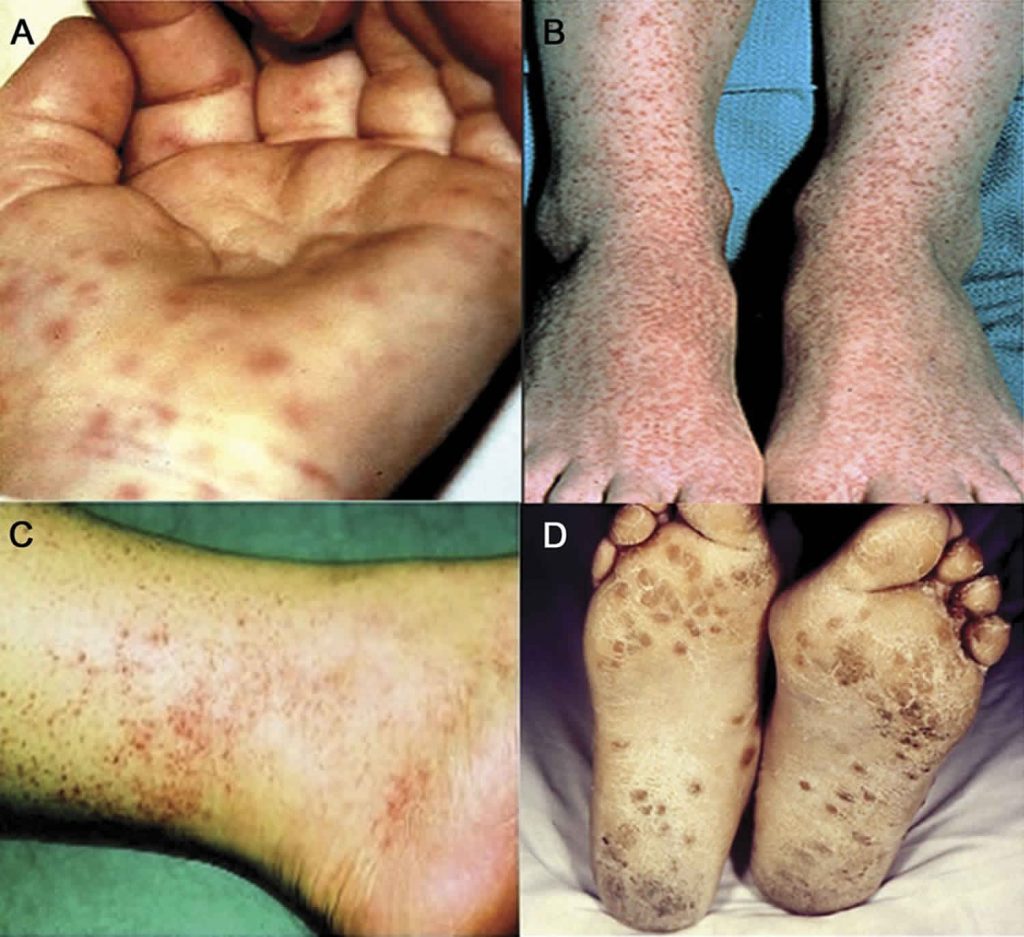
Meningococcal disease is caused by Neisseria meningitidis, a bacterium that is
commonly carried in the nasopharynx. Disruption of nasal mucosal membranes,
perhaps by viral infection, may facilitate the development of invasive disease. The
severity of the disease is related, in part, to the virulence of the meningococcus and to
the potential for release of endotoxin, which plays a key part in the pathogenesis of
meningococcal septic shock.

Meningococcal septicaemia:
Fulminant meningococcal infection can cause septicaemia (acute meningococcaemia)
and death within hours of the first symptoms. Early diagnosis may depend on the
recognition of cutaneous signs that include:
• An erythematous maculopapular rash.
• Petechiae—usually palpable, but may be sparse in the early stages.
• Purpura fulminans with ecchymoses, large areas of haemorrhage, and haemorrhagic
blistering.
• Gangrene and extensive skin infarction.

Chronic meningococcaemia :
• This immune complex-mediated illness presents with a low-grade relapsing fever
that is associated with a vasculitic rash and problems such as arthralgia, pneumonia,
or ophthalmitis.
• Several blood cultures may be needed before the diagnosis is confirmed, but chronic
meningococcaemia responds rapidly to systemic antibiotics.
• The differential diagnosis encompasses other causes of cutaneous vasculitis,
including IgA vasculitis (henoch–Schönlein purpura).